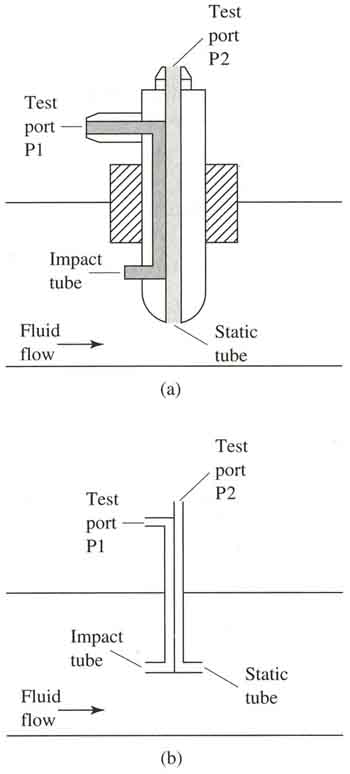AMAZON multi-meters discounts AMAZON oscilloscope discounts
The pitot tube (pronounced like the words pea toe) is a device that has two tubes that are placed in a fluid flow to sense the impact pressure and the static pressure used to determine the amount of pressure drop. The figure below shows two examples of pitot tubes. In the first example two tubes are connected side by side. One of the tubes has a hole in it that faces the fluid flow (impact tube), while the other tube has a hole in it that faces away from the fluid flow (static tube). The impact tube measures the higher pressure (impact pressure), and the static tube measures the lower pressure (static pressure) as fluid flows past the pitot tube.
The second example shows two tubes that are mounted one inside the other. The inside tube measures the impact pressure, and the outside tube measures the static pressure. In both examples the ends of the pitot tube that are outside the pipe are connected with plastic tubing to a sensor or instrument that can measure a very small pressure differential. The difference between the impact pressure and the static pressure is very small so a manometer or ultralow differential pressure sensor must be used to measure the pressure differential. The manometer can be used if only a visual indication is needed, and a differential pressure sensor or transducer is required if the pressure drop is converted to an electrical signal.

ABOVE: (a) Pitot tube with its two tubes mounted side by side. (b) Pitot
tube with one tube inside the other. The inner tube senses the impact
pressure and the outer tube senses the static pressure.
Previous: Flow Tubes | Next: Elbow Meters